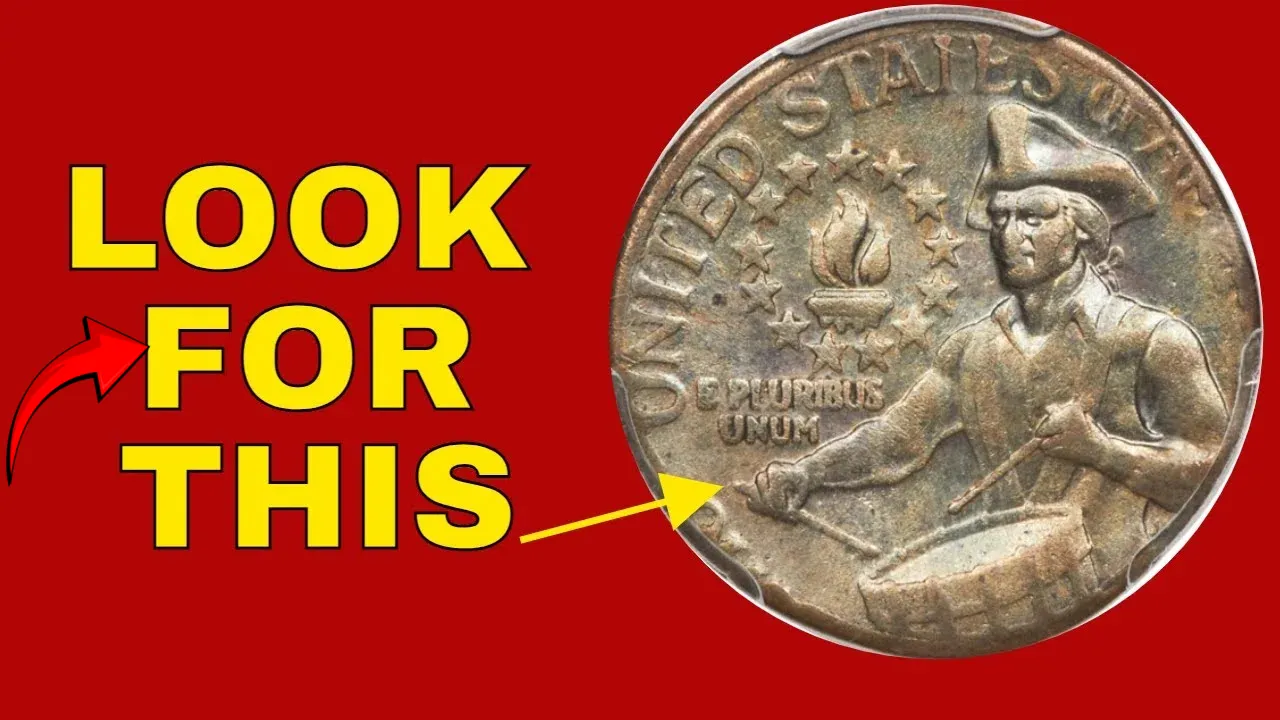Most of us don’t think twice about the coins in our pockets. They jingle around, get tossed into jars, or are handed over without a second glance. But what if one of those quarters was worth more than your car—or even your house?
One incredibly rare Bicentennial Quarter, released in 1976, has been valued at a staggering $11 million, and what’s even more astonishing is that it could still be out there—circulating like any ordinary coin. That means someone might unknowingly use it to buy coffee or feed a vending machine.
In this article, we’ll break down the story behind this extraordinary quarter, why it’s worth so much, and how you can tell if you’re holding onto one.
What Is the Bicentennial Quarter?
In 1976, the U.S. celebrated 200 years of independence, and to commemorate the Bicentennial, the U.S. Mint issued a series of special coins—including quarters, half dollars, and dollar coins—with unique designs.
The Bicentennial Quarter replaced the traditional eagle on the reverse side with a striking image of a colonial drummer and a torch of victory. The date on these coins is marked 1776–1976, instead of a single year.
While millions were minted and remain common today, a handful of rare variants—due to minting errors or special silver content—have become some of the most valuable coins in circulation.
Quick Overview: $11 Million Bicentennial Quarter
| Feature | Details |
|---|---|
| Coin Type | U.S. Bicentennial Quarter |
| Year | 1976 (dated 1776–1976) |
| Estimated Value | $11 million |
| Material | Struck on 90% silver planchet |
| Error Type | Likely mint error (double die, off-center strike) |
| Condition | Uncirculated or proof quality |
| Rarity | Extremely rare – possibly unique |
| Circulation Status | Believed to still be in circulation |
| Reverse Design | Colonial drummer with torch |
| Mint Marks to Watch | “S” (San Francisco), none (Philadelphia) |
| Collector Demand | Extremely high |
Why Is This Quarter Worth $11 Million?
The staggering value of this quarter isn’t just about age. It’s a perfect storm of rarity, error, composition, and condition:
- Silver Composition: It was struck on a 90% silver planchet, rather than the standard copper-nickel.
- Minting Error: It may feature rare errors, such as a double-die strike or an off-center impression.
- Condition: Believed to be in proof or uncirculated condition, showing little or no wear.
- Rarity: Only one or two such examples are known to exist.
- Collector Hype: High-end collectors will pay millions for ultra-rare coins, especially those tied to U.S. history.
Could It Still Be in Circulation?
Amazingly, yes.
Some experts believe that one of these ultra-rare quarters was never pulled from public circulation. That means it could be sitting in a coin jar, handed out as grocery store change, or riding around in your cupholder.
It’s not unheard of—rare coins have surfaced in everyday change before. Someone could unknowingly use a multimillion-dollar coin without realizing it.
How to Spot the $11 Million Bicentennial Quarter
Here’s what to look for when examining your 1976 quarters:
- Dual Date: Make sure the coin is marked 1776–1976.
- Reverse Design: It should show a colonial drummer with a torch.
- Edges: Regular quarters have a copper stripe on the edge. A solid silver edge could indicate a silver planchet.
- Mint Marks: Look for an “S” (San Francisco mint) or no mint mark (Philadelphia).
- Check for Errors: Blurry or doubled images, off-center strikes, or other oddities may point to a mint error.
Pro Tip: Use a magnifying glass and good lighting to inspect your coin closely. Compare it to standard Bicentennial quarters online.
What to Do If You Think You’ve Found One
If you believe you’ve found a rare Bicentennial Quarter:
- Don’t Clean It – Cleaning can reduce its value significantly.
- Handle with Care – Use gloves or hold it by the edges.
- Protect It – Store it in a coin sleeve or protective case.
- Get It Graded – Contact a professional service like PCGS or NGC.
- Consult a Coin Dealer – A reputable coin dealer can offer insights into its value or connect you to collectors.
Even if your quarter isn’t worth $11 million, those with minting errors or silver content could still fetch hundreds or thousands of dollars.
FAQs: Bicentennial Quarter Value
1. Are all Bicentennial Quarters valuable?
No. Most are common and only worth face value. Only versions with errors, silver content, or proof quality are valuable.
2. How can I tell if my quarter is silver?
Check the edge. A silver coin has a uniform silver color, while standard quarters have a visible copper layer. Silver coins also produce a distinct “ring” sound when dropped.
3. What’s the best way to sell a rare coin?
First, get it graded and authenticated. Then sell through reputable coin dealers, auctions, or certified online platforms.
4. Can valuable coins still be found in circulation?
Yes—though rare, it’s possible. People often unknowingly spend rare coins. Always check your change carefully!
5. Is it legal to own and sell a rare coin?
Yes, as long as it’s obtained legally. You are free to keep, grade, or sell your rare coin.
Final Thoughts
The story of the $11 million Bicentennial Quarter is a thrilling reminder that treasures might be hiding in plain sight. While your odds are slim, they’re not zero.
So the next time you get change at the gas station or dig into your coin jar, take a closer look. Your ordinary quarter might be an extraordinary discovery—one that could change your life.
Happy hunting!
